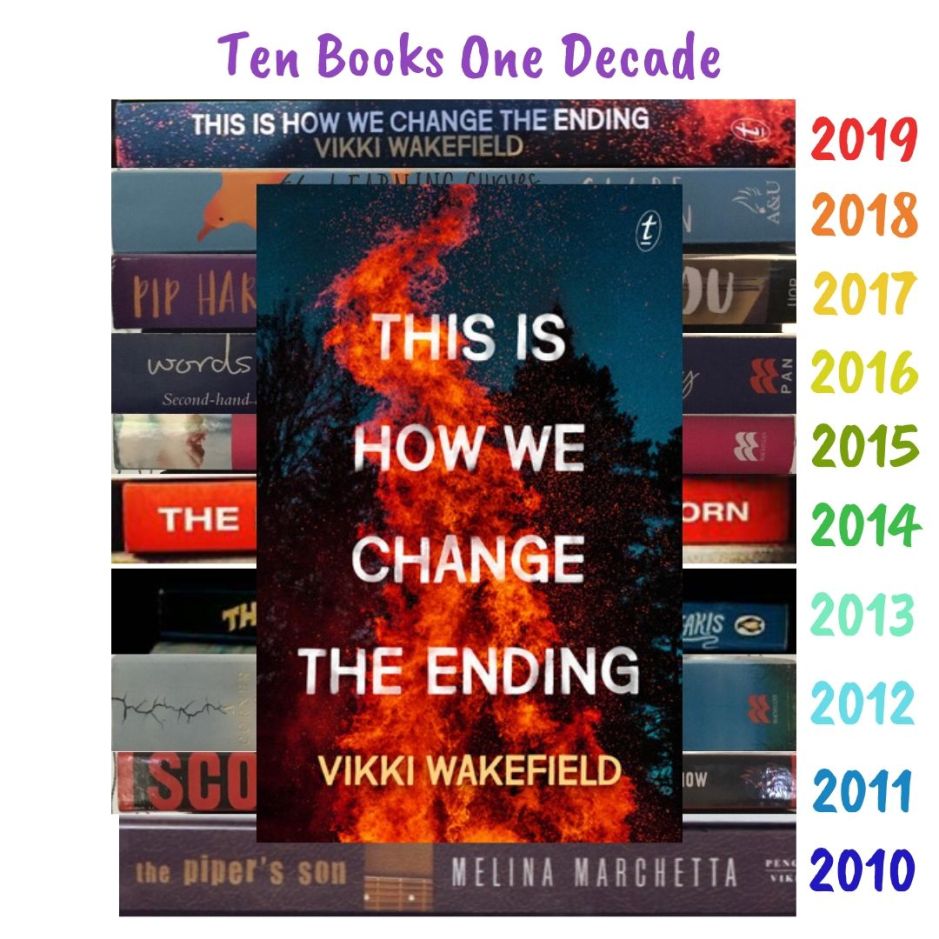Putting myself out there to share my highlights of a decade of reading #loveozya novels. These were originally posts on my Instagram and Litsy feeds from Dec 28 to Jan 6.
Tenbooksonedecade
2010
I cannot remember 2010. I was working in a secondary boys’ library and had already been there for 4 years. Enough to feel comfortable. I remember @childrensbookdaily had talked me into returning to uni to complete a Masters of Ed. ‘We need to update our degrees’. Sigh. I only got through one semester because I knew taking on the role of Qld Judge for the #cbcaawards would mean I would be reading (and not much else). I read over 400 books that year, and nearly as many the following.
Melina Marchetta’s return to the world of Francesca and her buddies completely bowled me over—emotional nuance, messy family, and the story of Tom. Shockingly real. I could have picked Marchetta for about four of my years, so it’s only right she’s my first pick of the decade.

2011
While The Piper’s Son didn’t win OR category, my pick for 2011 did. It would be remiss of me not to select at least one Scot Gardner book. His writing over the last 15 years reflect much of the change in YA trends. His male protagonists are often lost (literally), certainly flawed, but always deserve the opportunities to put their lives in order. I especially appreciate that romantic love isn’t a major concern and that friendship, identity and family are strong and welcome features of Gardner’s themes.
The Dead I Know features Aaron, a young man looking for a role model, searching for answers, and the simmering thread of violence is always lurking, ready to pull him into a darker world. Luckily his apprenticeship with John gives him the sense of security and stability he needs. Big shout out to Sparrow (2017) and Changing Gear (2018), which both challenge toxic masculinity norms.
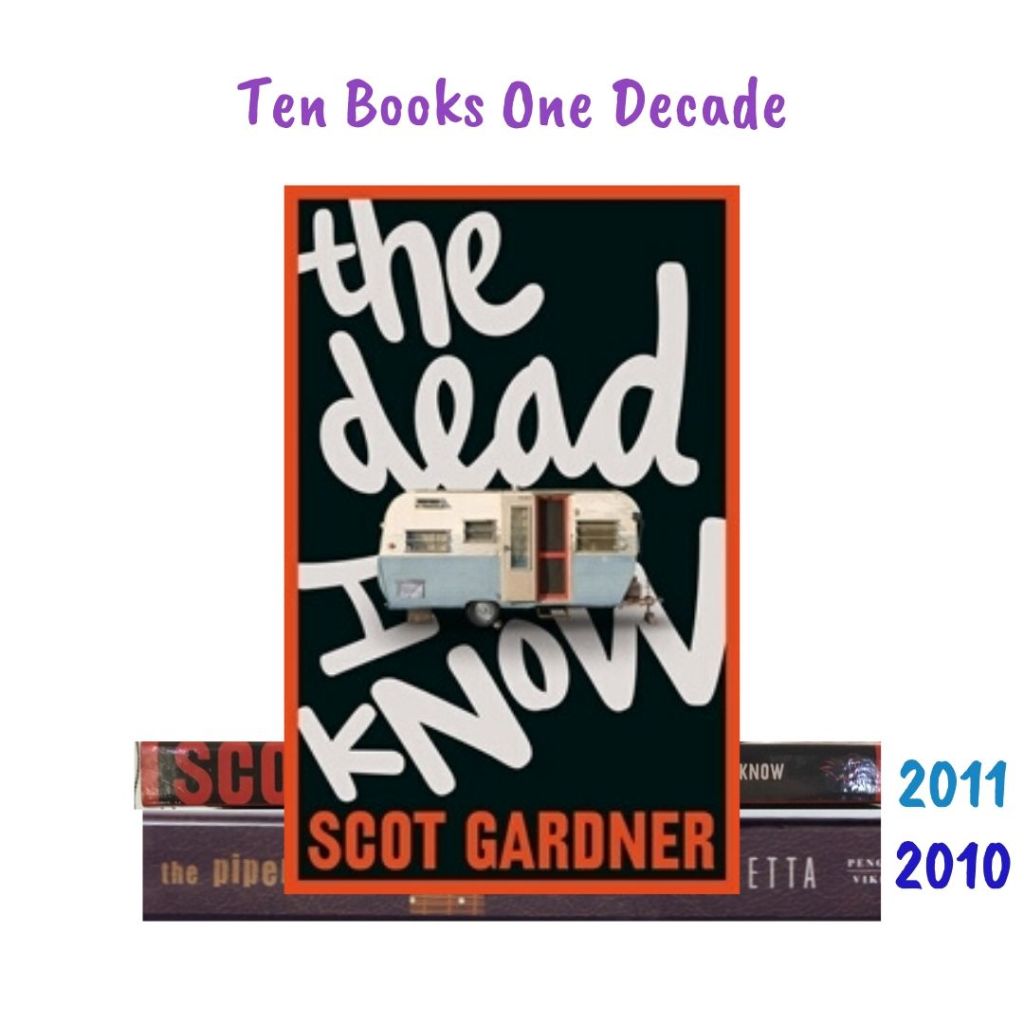
2012
My oldest son slacked his way through Year 12, and I spent the year carting him to gymnastic training and events, choral and orchestra rehearsals and performances, and I took a deep breath after judging for two years, stepping down from reading over 80 #loveozya novels to only 29. Jaclyn Moriarty released a fantasy novel that started the quirky, original warm-hearted series, The Colours of Madeleine which I completely embraced.
Her two lovely main characters, Elliot and Madeleine, swapping letters through a tear between their two worlds, show feisty tenacity, kindness and courage. They are clever novels seemingly light and witty, but that are actually and ultimately multi-layered and terrifically insightful. Her work continues to speak to ordinary people with extraordinary imaginations and startling inner lives. I love everything she writes.
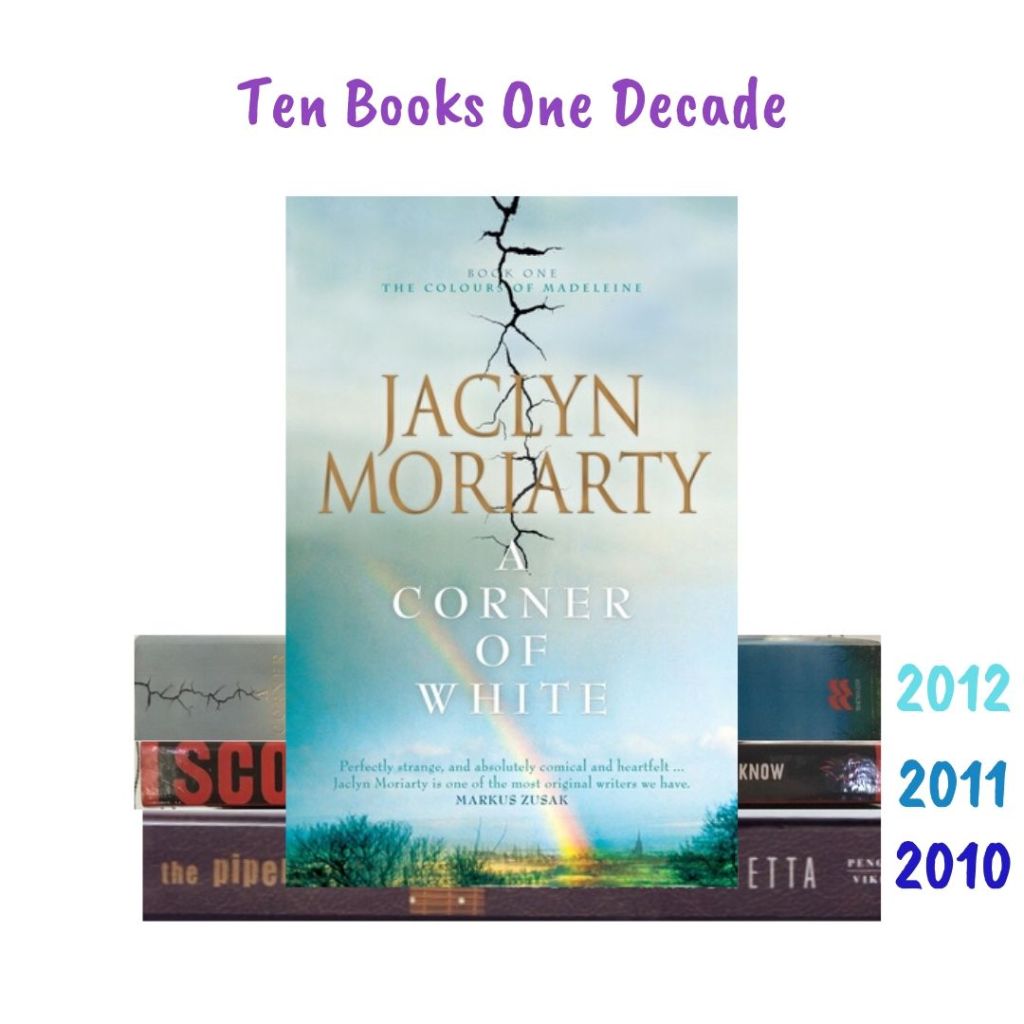
2013
Confession Time: I didn’t read The First Third until 2017. After I read The Sidekicks. After I had conversed with Will. After I left my boys’ school library, where I had pitched it and promoted it. All I can say to 2013 me is what the hell? I didn’t miss the hype. I watched it receive both critical and popular acclaim. All my peers lauded it and the kids loved it and when I finally read it, I accepted its greatness. The First Third is a perfect blend of humour and emotion. Will treats his audience with respect, and he does not pander or preach. Will is a person of many opinions and a marketing acumen I envy. His stories are authentic, his style is his own, and I can’t wait to see what else he has for us.
Special mention to my other favs: Wildlife by Fiona Wood, Life in Outer Space by Melissa Keil and Girl Defective by Simmone Howell.

2014
II went back to study part-time in 2014. My younger son completed Year 12 at the same school as me, both pressures making it a difficult time. Probably the reason why I only read about 24 #loveozya novels. Having said that, I actually predicted 5 of the 6 OR shortlisted books that year (#humblebrag), so there’s that.
The Protected explores grief in exquisite and infinite sharpness. Hannah’s pain is raw and real. Conversing with her dead sister Katie creates unbearable connection. Her parents’ absence is understandable, yet also unforgivable, and it’s astonishing the relief we feel when Hannah starts talking to Anna. Josh’s appearance brings much needed sunshine to what is in essence of story about confronting death and accepting loss. Claire Zorn is an assured, master storyteller. I hope we don’t lose her entirely to the picture book genre.
Other favourites of 2014 include Intruder by Christine Bongers, Are you Seeing Me? by Darren Groth and Tigerfish by David Metzenthen.

2015
This was my most difficult year professionally. I found myself without a job in August, just in time to sort my youngest son into Calvary basic training a week before his 18th birthday. That and study kept me from despair and trauma. Finding a new job after turning 50 seemed an impossible dream. I only read 18 #loveozya novels, but the highlight was Fiona’s third book in the aptly named Six Impossiverse trilogy, Cloudwish. There was something elusive and mercurial about Van Uoc’s inner voice, such a contrast to her external presentation – wild versus compliant, risky versus accepting, bold versus quiet. She’s a rare find.
Just as important as Fiona’s writing skills, is the fierce support she offers other Australian authors and to the YA community at large through her thoughtful examinations of books and trends. She promotes diversity and inclusivity, and I have gained insights every time I hear her speak.
Other notable mentions of 2015 for me are A Single Stone by Meg McKinlay, The Flywheel by Erin Gough and Lili Wilkinson’s Green Valentine.

2016
I found validation and purpose this year when Pauline from Riverbend Books asked me to read for RSO. I will be ever grateful for her confidence in me. I continue to read for this amazing service – I mean come on; someone asks me to read YA! #luckyandgrateful I also completed my MEd (Knowledge Networks and Digital Innnovations) while I started the process of becoming a supply/relief teacher.
This was a tough year to pick from the 36 novels I read. Three high quality stories, all exploring grief over the unexpected tragic loss of a loved one, could easily have been the one, but two authors have already had other books highlighted (demonstrating their mastery), but on top of that, Cath Crowley’s Words in Deep Blue also focused on books! And bookshops! And the power of words! And included swoony Henry! So, winner. I love this book so much.
The other two excellent #loveozya novels for me in 2016 are One Would think the Deep by Claire Zorn and The Sidekicks by Will Kostakis.
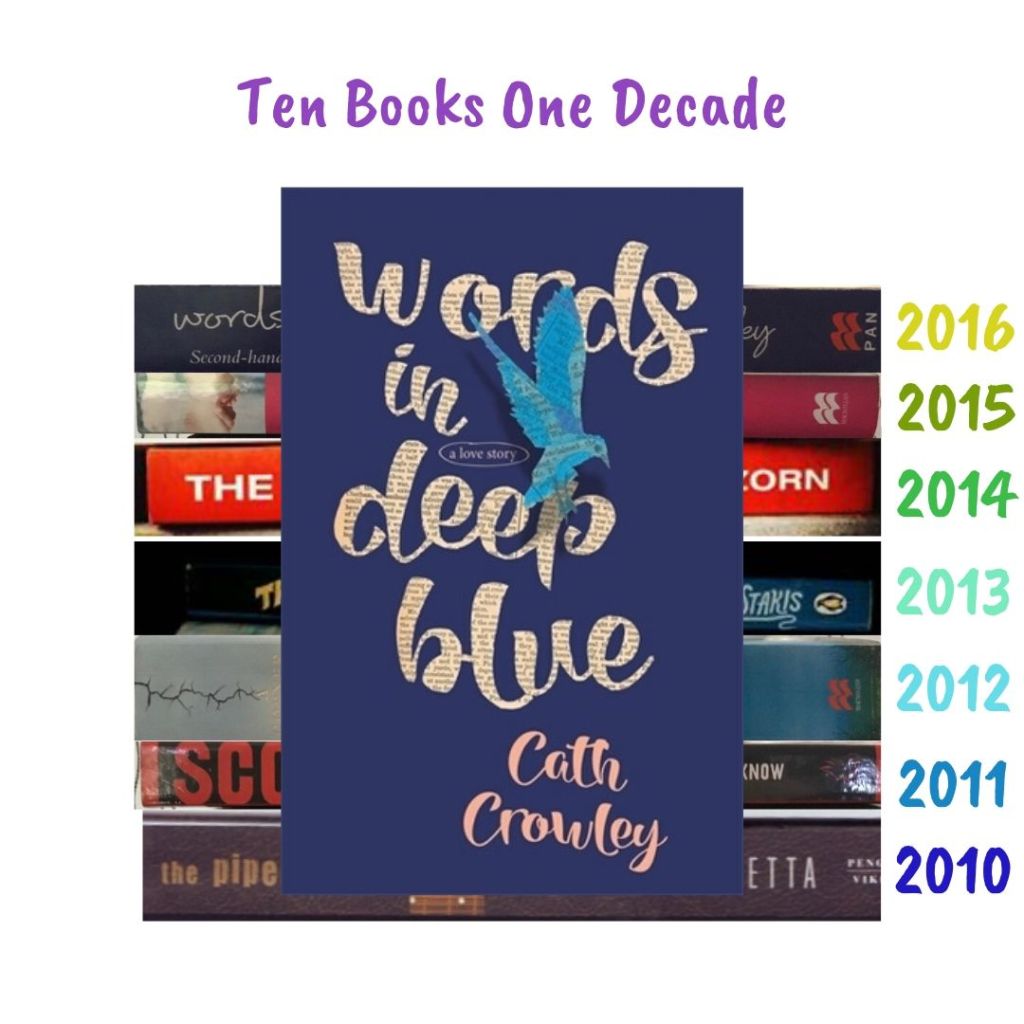
2017
If I thought 2016 was a difficult year to pick a best book, 2017 has been even harder. I read 45 #loveozya books through my ongoing association with RSO and was able to spend significant time looking after other people’s lovely libraries. This made me realise that being able to share my love of teen novels was still something I wanted to do. But I was also asked to speak at several network meetings, PD events, and I started to believe that I would be able to fill my time valuable by helping other library staff. I started applying more seriously for full time work, but also started to formulate a possible plan b. And was less stressed, less anxious.
But back to the wonderful books of 2017. How do I pick between some of the amazing books that were released this year? I could easily select any one of ten books, and if you want to see them all, go here. I made a ridiculous number of lists, two specifically related to Australian YA.
The book I ultimately chose, Because of You by Pip Harry rates highly for a number of reasons. I am going to go back one of many ravs about this book to try to explain… Harry’s inclusive and diverse cast of minor characters carries a subtle message about stereotyping and judging others. The tone is warm and gentle, but the subject matter is harsh and uncomfortable. However, readers aren’t made to feel pity or guilt. Instead they are inspired by the way individuals rise to the challenge to help others… It’s an astonishingly powerful story.

2018
In a year of Lenny (Book of Everything), Merrick (Changing Gear), and Ana and Jono (from Between Us), it is the protagonist of The Learning Curves of Vanessa Partridge who stays with me most of all. I apparently read 49 #loveozya novels this year, helped by me judging the Young Adult category of the Qld Premier’s Literary Awards. Vanessa’s intellectual curiosity about her sexuality and her navigation through unwanted advances was a highlight. The novel also covered environmental issues, parental mental health, and authentic friendships. I loved every complicated, messy thing about it!
This year I returned to a library on a part time basis. It was a perfect re-introduction back to school, and I settled into a rhythm of juggling a number of roles—I haven’t really mentioned my active involvement in CBCA Qld, and this year, I took on President of the Branch, in a year where we hosted the Shortlist and Winner announcement functions. I really fluked it in, because Jenny Stubbs’s team did the work, and I got to be the front line of the credit taking. Seriously, Qld achieves way beyond its means in these spaces. Such a great year!!

2019
This was a tough year – health issues, death of my dad, and returning to work full time meant I was often stressed. However, some new good things happened too – Rhianna Patrick (@ABCRhi) invited me to be a regular on her radio book chat panel and that has been such good fun. Another year as Qld Branch president, a trip to Canberra for the National CBCA conference and judging the Qld Lit Awards kept me involved in kids’ lit while school encouraged me to learn more about coding and programing (eek). There were fewer YA novels released, but more MG, and I have many opinions about that.
This is How We Change the Ending represents Vikki Wakefield’s contribution to YA this decade. Starting with her debut novel. All I Ever Wanted in 2011, all five novels reflect a genuine representation of Australian teens—their desires, their fears, and their triumphs. Her latest sub-verts our expectations and challenges us all to listen to the teens in our lives and support them to find their best selves.

I also completed loved It Sounded Better in My Head by Nina Kenwood.
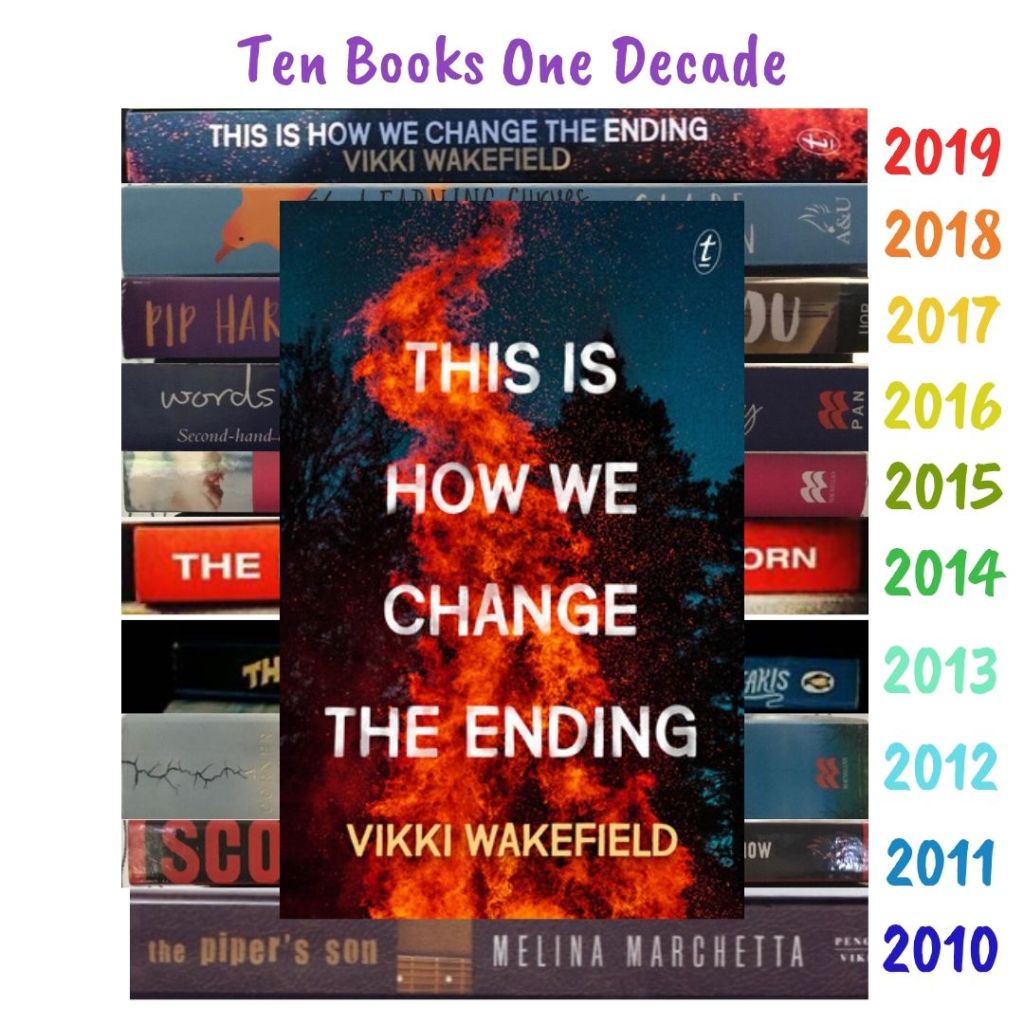
So farewell to the short-sighted twenty-teens. May we all save the planet in the twenty-twentys!

